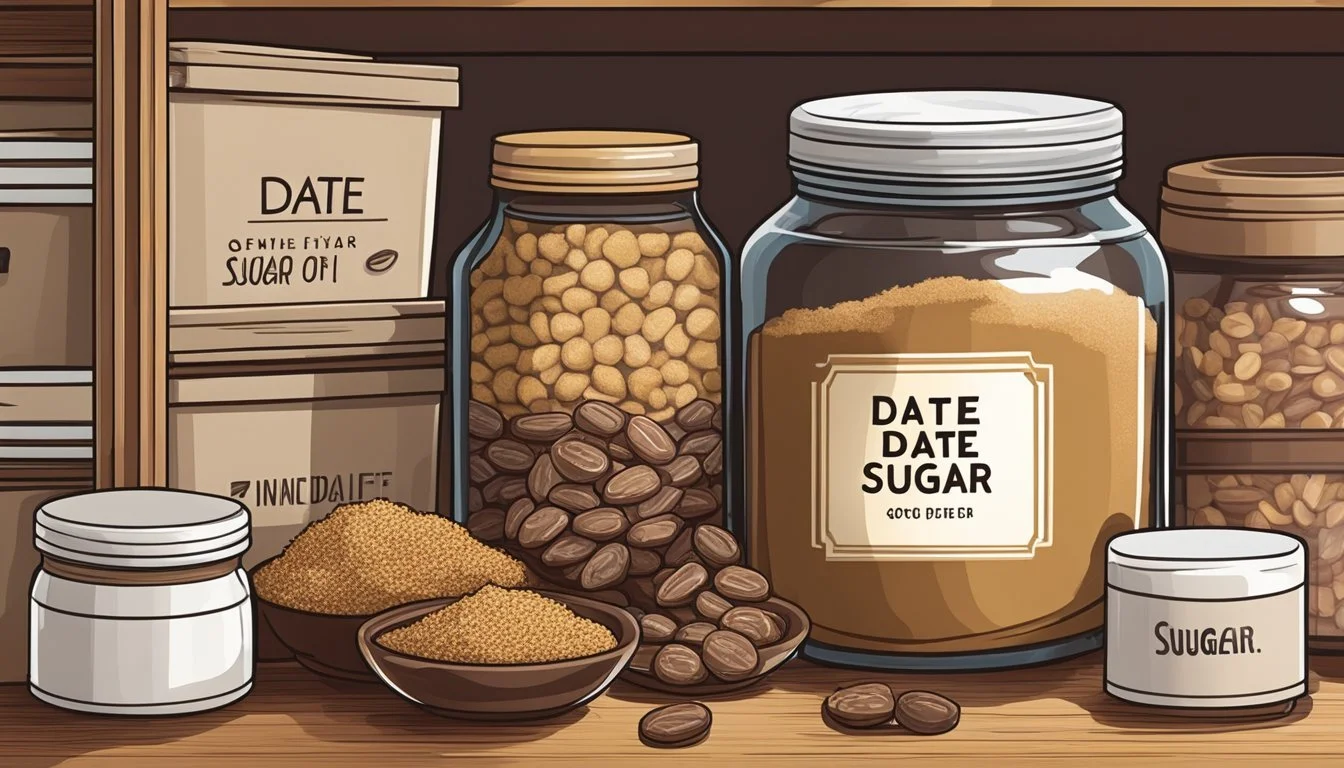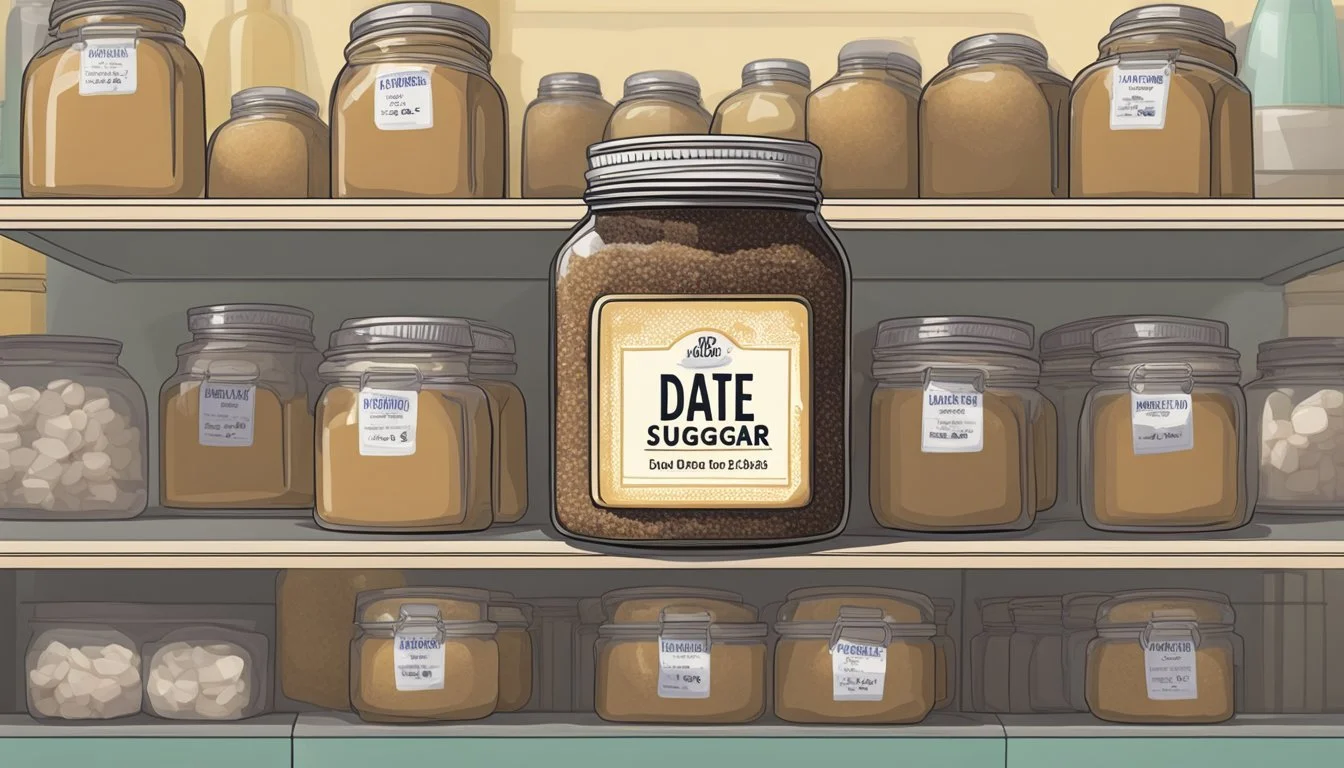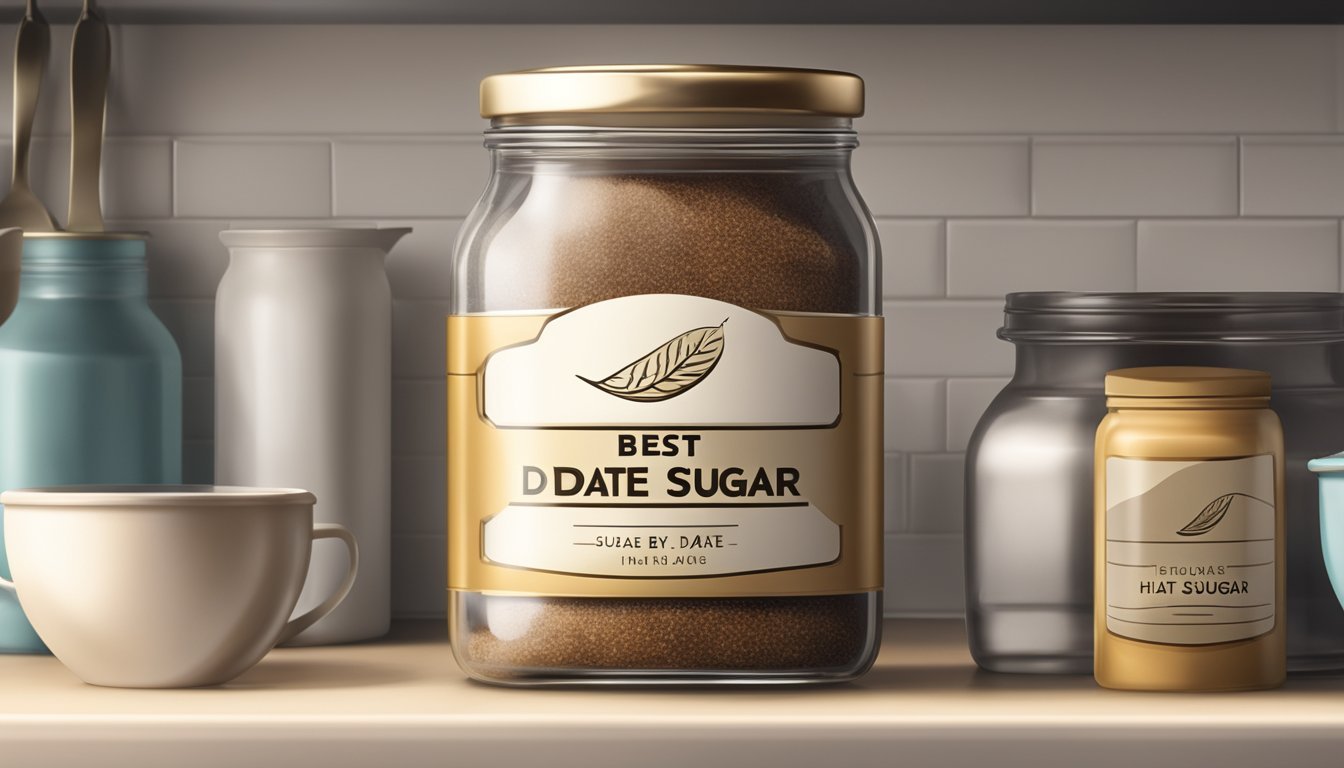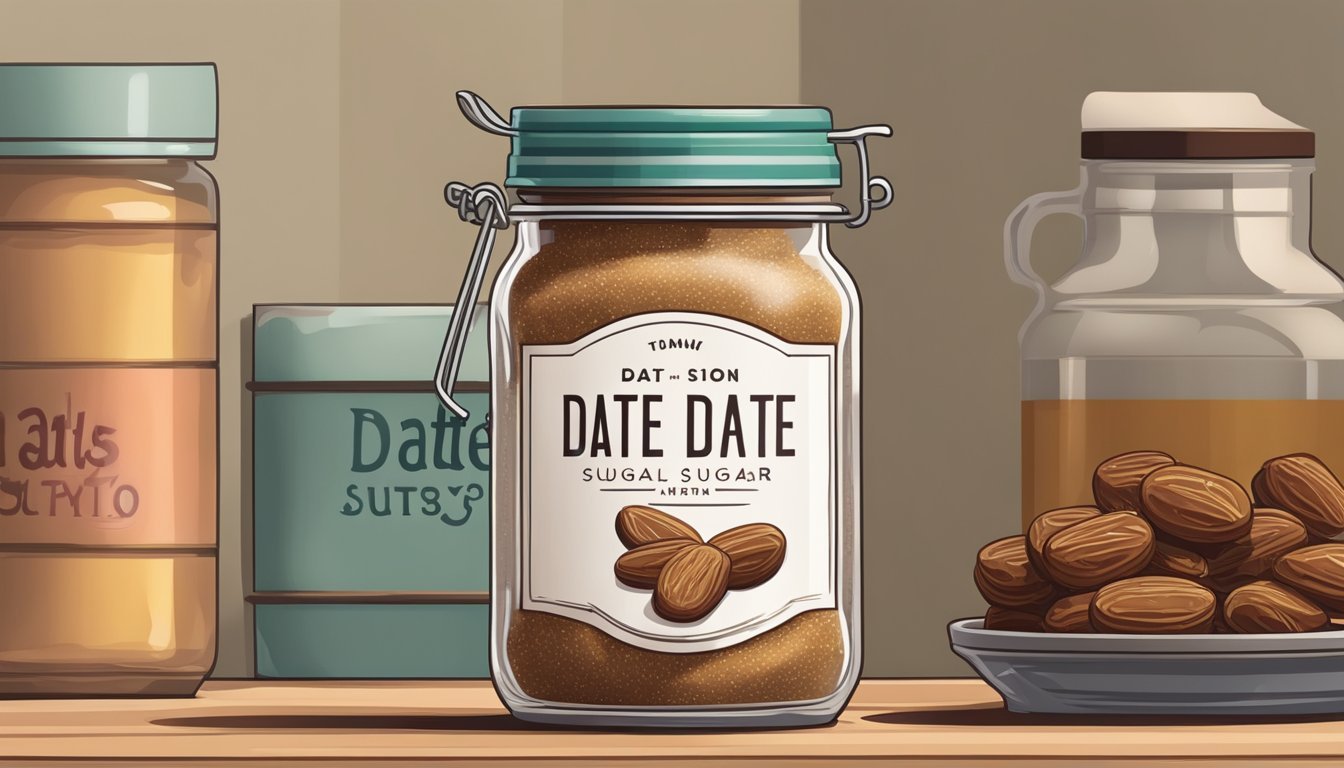How Long Does Date Sugar Last?
Shelf Life and Storage Tips
Understanding the longevity of sugar (how long does sugar last?) and its varieties, including date sugar (how long does date sugar last?), is important for both culinary professionals and home cooks. Date sugar is a natural sweetener derived from dehydrated and ground dates. This less processed form of sugar retains some of the nutrients found in the whole fruit, adding a unique flavor and texture to various recipes.
While conventional white sugar boasts an impressive shelf life, date sugar also offers commendable longevity when stored properly. Proper storage conditions for date sugar involve keeping it in a cool, dry place away from direct light and heat. Airtight containers are preferable, as they protect the sugar from moisture and external odors, which can affect its quality and taste over time.
Date sugar may not have the indefinite shelf life of white sugar, but its shelf life is still considerable. It typically remains optimal for use for an extended period past the best before date, as long as it is stored appropriately. Consumers should rely on both the best before dates and the state of the sugar—checking for changes in smell, taste, and texture—to determine its usability.
Understanding Date Sugar
Date sugar, derived from dehydrated and ground dates, offers a unique alternative to traditional sweeteners like white, brown, or powdered sugar. It stands out with its distinctive flavor profile and nutritional advantages.
Characteristics of Date Sugar
Date sugar is created by grinding dehydrated dates into a granular form, which resembles the texture of granulated sugar. It maintains a natural sweet, butterscotch-like flavor, far more complex than that of simple sugars. Unlike white sugar or powdered sugar that dissolve easily, date sugar contains fine fibers from the dates, giving it a slight grittiness which may not dissolve completely in liquids.
The texture and solubility of date sugar differentiate it significantly from other sugars such as brown sugar or raw sugar (how long does raw sugar last?). Brown sugar, for instance, has a moistness from the molasses content, enabling it to dissolve more easily than date sugar. Raw sugar, which is less processed than white sugar, still lacks the fiber that characterizes date sugar.
Nutritional Profile
Date sugar is not only valued for its flavor but also for its nutritional properties. It contains:
Fiber: Both soluble and insoluble, contributing to digestive health.
Vitamins and Minerals: Higher levels compared to white sugar, including potassium, magnesium, and manganese.
Nutrients Date Sugar White Sugar Fiber Present None Vitamins Higher Levels Nearly Absent Minerals Richer Content Minimal
In contrast, conventional sugars, such as white and powdered sugars, primarily provide empty calories without the beneficial nutrients found in date sugar. Furthermore, date sugar has a lower glycemic index, which means it may impact blood sugar levels less significantly than other sugars, making it a preferable option for those managing blood sugar.
Thus, date sugar not only adds a rich flavor to foods but also contributes a nutritional aspect that other sugars can't match.
Shelf Life of Date Sugar
Date sugar, a natural sweetener made from dried and ground dates, differs from other sugary products because it retains much of the nutritional value of the fruit. Uncertainties about its shelf life are common, yet knowledge of proper storage and influential factors can assure users of its longevity.
Factors Affecting Shelf Life
Storage Conditions: Date sugar's shelf life is highly dependent on its storage environment. It should be kept in a cool, dry place away from direct sunlight. Moisture is particularly detrimental, as it can lead to clumping and potential spoilage. Storing date sugar in an airtight container is essential to prevent exposure to air and moisture.
Temperature: Exposure to high temperatures can decrease date sugar's quality more rapidly. Ideal storage temperatures are below room temperature, in the range of 60-70°F (15-21°C).
Typical Shelf Life Expectancy
Unopened Package: Date sugar can last up to a year past its best-by date if it remains unopened and is stored under optimal conditions.
Opened Package: Once opened, using date sugar within six months is advisable to maintain its best quality. However, it may remain safe to use beyond this period if no signs of spoilage are present.
State Expected Shelf Life Unopened Up to 1 year past best-by date Opened 6 months for best quality
There is no strict expiration date or use-by date for date sugar, as the term "indefinite shelf life" might suggest for regular granulated sugar. Date sugar, due to its organic nature, adheres to a best-by date for peak quality but can remain safe beyond that when stored properly.
Proper Storage Techniques
To ensure the longevity and quality of date sugar, proper storage techniques must be employed. Maintaining the right environment in a pantry or using refrigeration can significantly extend the shelf life of date sugar.
Storing Date Sugar in Pantry
When keeping date sugar in the pantry, it should be stored in an airtight container to prevent moisture from clumping the sugar. Pantries should be dry and cool, with an ideal temperature being below 70°F (21°C). A moisture-proof container will protect the sugar from humidity changes that can affect its texture.
Container: Airtight, moisture-proof
Temperature: Below 70°F (21°C)
Environment: Dry, away from strong odors
Shelf Life: Best used within 18 to 24 months
Refrigeration and Freezing Options
Although not typically necessary, date sugar can be stored in the fridge or freezer to further reduce the exposure to moisture and heat. If one opts for refrigeration, date sugar must be in a moisture-proof container to prevent condensation. Freezing can extend shelf life but is generally reserved for long-term storage.
Refrigeration:
Container: Airtight, moisture-proof
Shelf Life: Extended beyond pantry storage
Freezing:
Container: Airtight, moisture-proof, freeze-safe container
Shelf Life: Extended; however, quality may diminish over time
Recognizing Spoilage
Date sugar, like any other food product, can deteriorate in quality over time. Recognizing the signs of spoilage and understanding how to prevent it are crucial for maintaining the sugar’s usability and taste.
Signs of Degraded Sugar
Odor: Fresh date sugar should have a sweet, caramel-like scent. The presence of any off-odors can indicate spoilage.
Appearance: If the sugar appears lumpy or clumped together, this may be a sign of exposure to moisture. While clumps in themselves do not necessarily mean the sugar is spoiled, they can be a precursor to further degradation.
Contaminants: The presence of mold, insects, or other contaminants is a clear indication of spoilage. These can introduce bacteria and other harmful organisms.
Preventing Spoilage and Contamination
Storage Conditions: Store date sugar in a cool, dry place away from direct sunlight. Ideal storage is in an airtight container to prevent moisture and contaminants.
Hygiene: Keep the storage area clean and free from pests. Regularly check for signs of bugs or insects that may lead to contamination.
Inspection: Routinely inspect the date sugar for any signs of spoilage. Discard it if there is any doubt about its quality.
Maintaining Sugar Quality
To ensure date sugar retains its quality and texture, one must follow defined storage protocols. These practices extend storage life and prevent sugar from hardening or forming lumps.
Best Practices for Date Sugar Care
Adhering to specific storage guidelines is crucial for maintaining the optimal quality of date sugar. Users should:
Choose an airtight container: This will limit moisture and prevent the sugar from absorbing odors.
Check the production date: Fresher date sugar is less likely to have quality issues.
Select a cool storage location: Heat can affect date sugar's texture and longevity.
Ensure a dry environment: Humidity is the nemesis of sugar storage, leading to clumping.
Prevent exposure to strong odors: Date sugar can become tainted by the aromas of other foodstuffs.
Dealing with Sugar Hardening and Lumps
When date sugar begins to harden or form lumps, it's often a sign of exposure to moisture or humidity. To address this:
To avoid hard brown sugar, consider storing sugar in a humid environment, as it retains moisture better than a dry one.
For hardened date sugar, place a slice of bread or an apple wedge in the container overnight to reintroduce moisture.
Break up lumps by blending or crushing them until the sugar returns to a granular state.
By following these recommendations, one can maintain the quality and extend the storage life of date sugar, ensuring it remains a healthy and flavorful addition to their pantry.
Utilization and Longevity
Proper use and storage of date sugar significantly impacts both its flavor profile and longevity. Date sugar, a natural sweetener made from dried dates, requires specific considerations in baking and storage to maintain its quality.
Optimizing Use in Baking
When using date sugar in baking, one should consider its unique properties. Date sugar doesn't melt like traditional sugar because it comes from dehydrated, ground dates containing fiber. This results in a different texture when making pastries like cookies or jams. For a smoother texture in baking recipes, it's best to:
Pulverize the date sugar further using a high-powdered blender if a finer consistency is desired.
Combine with liquid ingredients to partially dissolve the sugar crystals, enhancing the flavor distribution in baking recipes.
Maximizing Shelf Life through Usage
To extend the shelf life of date sugar, minimize the sweetener's exposure to air and moisture, as these can cause clumping and degradation of flavor. The following practices should be adhered to:
Seal the sugar in an airtight container to prevent moisture absorption and flavor loss.
Store in a cool, dry place away from direct sunlight and heat sources, which can cause the sugar to form hard crystals.
By following these guidelines, the longevity of date sugar in one's pantry can be maximized, retaining its butterscotch-like flavor and making it readily available for use in various recipes from cookies to jellies.
Safety and Health Considerations
When it comes to storing date sugar, it's vital for consumers to adhere to food safety measures to maintain its quality and consider the impact of sugar consumption on overall health.
Food Safety Measures
Food storage: Date sugar should be kept in a cool, dry place, tightly sealed in an airtight container. This prevents the sugar from clumping or hardening due to moisture exposure.
Expired sugar: While date sugar does not spoil in the same way as perishable food, an off smell or change in color can indicate it's past its prime and may affect the flavor of food.
Checking for spoilage: Inspect the sugar for any strange odors, discoloration, or the presence of insects or mold. If any of these signs are evident, it is best to discard the sugar to avoid potential health risks.
Sugar and Health
Ingredients: Date sugar is made from dried dates, retaining some of the fruit's natural nutrients, such as fiber. However, it should be consumed in moderation as part of a balanced diet.
Consumption: Regular health assessments are recommended to determine individual dietary needs. Individuals with conditions that require sugar intake monitoring should consult with healthcare providers.
Troubleshooting Common Issues
When dealing with date sugar, one may encounter issues like hardening of the sugar or the need for substitutes. These common problems have simple solutions that can restore or replace your date sugar effectively.
Softening Hard Sugar
Date sugar can harden over time, especially if exposed to moisture and then left to dry out. If an individual finds their date sugar has turned into a hardened block, they can try placing a piece of bread or a slice of apple in an airtight container with the sugar. These items will emit moisture that can help soften the sugar over the course of a day or two. It's important to remove the bread or apple once the sugar has softened to avoid mold growth.
For sugar cubes that have turned rock solid, placing them in a sturdy plastic bag and gently breaking them with a rolling pin or hammer can return them to a granulated form.
Sugar Substitutes Information
Those seeking a substitute for date sugar in recipes might look for options that maintain the intended flavor profile. Here are some commonly used substitutes:
Coconut sugar: (how long does coconut sugar last?) Shares a similar flavor profile and can be used on a 1:1 ratio.
Honey or maple syrup: These are sweeter than date sugar, and liquids, so one would need to adjust the quantity and possibly other liquids in the recipe.
Substitute Ratio to Date Sugar Adjustments Coconut sugar 1:1 None required Honey 3/4 cup per 1 cup Reduce other liquid by 1/4 cup Maple syrup 3/4 cup per 1 cup Reduce other liquid by 1/4 cup
It's essential to note that while these substitutes can mimic some properties of date sugar, they will not replicate it completely due to differences in texture and how they may react under heat.
Special Storage Concerns
When storing date sugar, one must consider environmental factors and biological threats that can affect its quality and shelf life.
Impact of Climate on Storage
Climate plays a significant role in the storage of date sugar. In regions with high humidity, date sugar can absorb moisture from the environment, leading to clumping and potential spoilage. Therefore, it is crucial to store date sugar in an environment that is cool and dry. Often, the best place for storage is in a pantry or cupboard, away from the kitchen where heat and steam are commonplace. Containers used for storing date sugar should be airtight to prevent moisture from seeping in and impacting the sugar's texture and quality.
Recommended Climate for Storage:
Temperature: Cool
Humidity: Low
Dealing with Pests and Insects
Date sugar can be an attractant to pests and insects due to its sweet nature. To prevent infestations, one should ensure that date sugar is stored in containers with tight-fitting lids. These containers act as a barrier against pests such as ants and pantry moths that may be lured by the sugar. Inspecting the storage area regularly for signs of pests can also help in taking timely action to protect the date sugar supply.
Pest Prevention Measures:
Use airtight containers with secure lids.
Regularly check for signs of pests in storage areas.
Myth-Busting Sugar Storage Beliefs
In the realm of sugar storage, common beliefs often conflict with expert advice — specifically regarding the perpetuity of sugar's shelf life and general misconceptions.
Examining Indefinite Shelf Life Claims
Experts assert that granulated white sugar, when stored properly, boasts an impressive longevity due to its pure, unadulterated nature. However, indefinite shelf life is a misleading term. It implies that sugar never goes bad, which isn't accurate; while it can last very long, its quality might diminish over time if not stored correctly.
Optimal Storage Conditions:
Container: Airtight
Environment: Dry
Temperature: Cool, stable
Addressing Misconceptions
Misconceptions abound when it comes to sugar storage, especially the notion that sugar can last forever without any quality loss. While granulated white sugar does not spoil like perishable goods, it can clump and become hard, affecting its texture and usability.
Granulated White Sugar: Often misconceived as having an eternal shelf life, it requires attention to storage to maintain its granulated state.
Expert Guidance: Consensus among experts emphasizes the significance of a moisture-free environment to preserve the quality of sugar over time.










